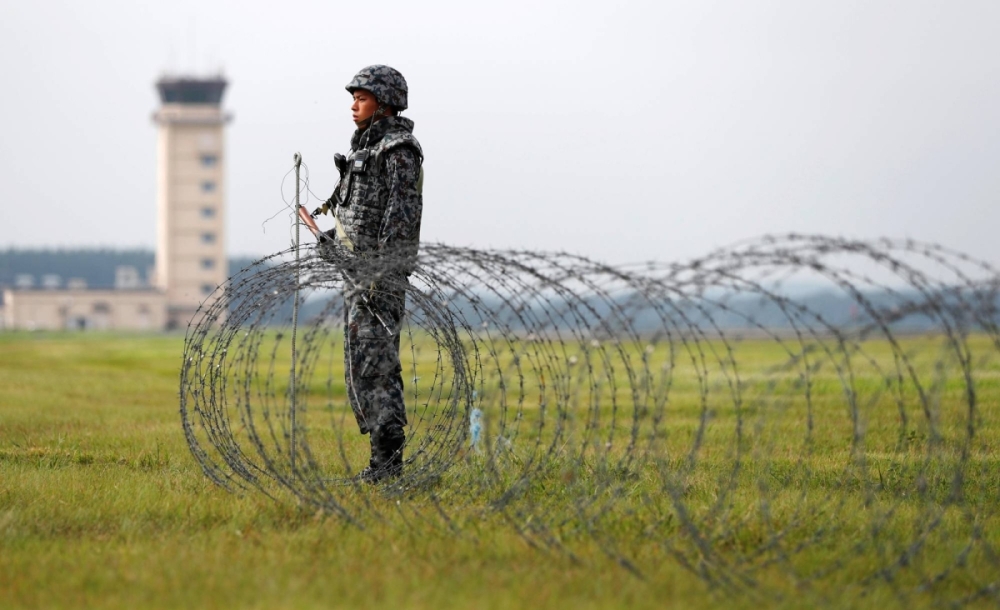Plans to Strengthen Military Cooperation
Japan and the United States are exploring plans to station a U.S. military coordination unit in central Tokyo. This unit will focus on enhancing collaboration with Japan’s Self-Defense Forces (SDF). Officials believe the central location will streamline operational planning and foster better communication between the two nations’ military commands.
The proposed site for the coordination unit is the U.S. military’s Akasaka Press Center, situated in Tokyo’s Roppongi district. This 27,000-square-meter site includes a heliport, officer housing, and facilities for the Stars and Stripes military newspaper. Acquired by the U.S. military after World War II, it remains a key asset.
Central Tokyo Location Offers Strategic Benefits
Placing the coordination unit near Japan’s Defense Ministry will enable both nations to coordinate operational plans quickly and efficiently. This move is particularly crucial as Japan faces increasing security challenges, including rising tensions across the Taiwan Strait.
While most U.S. military headquarters functions are expected to remain at Yokota Air Base in western Tokyo, the new unit will ensure rapid, on-the-ground collaboration with Japanese defense officials.
Changes to U.S. and Japanese Military Command Structures
The planned coordination unit aligns with changes in both nations’ military command structures. In March 2024, Japan’s Defense Ministry is set to establish a unified operations command for all SDF branches. This will improve how the SDF coordinates across its ground, air, and maritime forces.
Simultaneously, the U.S. military plans to upgrade its Yokota-based headquarters into a new command. This new command will take over direct authority for U.S. Forces Japan from the Hawaii-based Indo-Pacific Command. The upgrades aim to enhance operational readiness and streamline decision-making processes.
Addressing Regional Security Concerns
The push for stronger military collaboration comes amid worsening security conditions in East Asia. Japan and the U.S. face increasing pressure to ensure preparedness as tensions rise in the Taiwan Strait and other areas near Japan.
At a bilateral summit in April, leaders from both nations emphasized the need to bolster joint military operations. They agreed to review and update their respective command systems to improve coordination and readiness.
The Role of the Akasaka Press Center
The U.S. military is considering locating the coordination unit at the Akasaka Press Center. While the Tokyo Metropolitan Government has requested the site’s return, U.S. officials see it as an ideal location for seamless military coordination.
The Akasaka Press Center’s proximity to the Defense Ministry is a significant advantage. The site already has the necessary infrastructure, including a heliport, which will support operational efficiency.
Enhanced Interoperability and Communication
The establishment of the coordination unit underscores the importance of interoperability between Japanese and U.S. forces. Both countries recognize the value of face-to-face communication for effective joint operations.
This enhanced setup will allow the two nations to share intelligence, plan operations, and respond to potential crises more effectively. It also reflects their shared commitment to maintaining peace and stability in the region.
Future Implications
As Japan and the U.S. deepen their military ties, the coordination unit will play a key role in ensuring both nations can respond swiftly to emerging threats. The collaboration highlights the growing strategic importance of the U.S.-Japan alliance in maintaining security in the Indo-Pacific region.
With these changes, both countries are taking concrete steps to adapt to evolving security challenges. The planned coordination unit will not only enhance their joint military capabilities but also serve as a symbol of their enduring partnership in a rapidly changing world.

